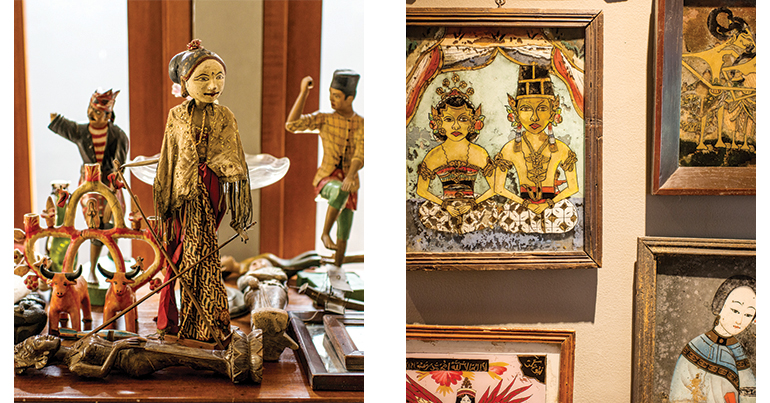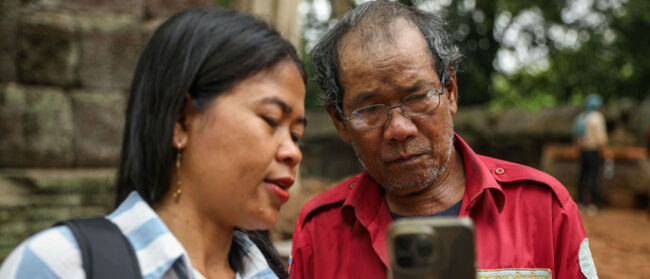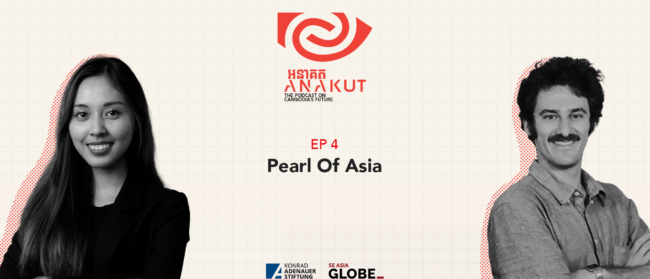While Engel Tanzil doesn’t think of herself as an artist, her earliest connection to the arts was practicing Sundanese and Javanese traditional dances in her youth, which she felt served as a window into the Indonesian subcultures. She never planned to get further involved in the arts, or to create a small economy for emerging artists in Jakarta. But after years of working for her husband’s graphic design company, LeBoYe – a phonetic play on the French phrase for “a good eye” – she found herself turning full force towards the arts.
Jakarta had become more and more modernised, with over 170 malls tightly packed into the city and the art scene competing for attention against the sole government-funded art museum in the metropolis. Without a platform for art, she feared, Indonesia’s rich subcultures, like those she had uncovered through dance, would be drowned out.

“We are lacking a place of creativity – a place about theatre, about music, about art, about culture. But we have that potential in Indonesia… Unfortunately, we don’t have a government that supports it,” Engel remembered thinking little less than a decade ago. “If there is not space for art in our country, where will the young generation go? Only malls?”
Even art students lacked the vision for how to apply their skills professionally, as Engel observed through the experiences of her husband, Ignatius Hermawan Tanzil, when he was a graphic design professor at Institut Kesenian Jakarta. Young artists often would give up their passions in exchange for more mainstream careers.
“There are so many young graduates, people that sometimes don’t know what to discover [after school],” said Engel. “Especially in design and visual communication, they don’t know what they’re going to do [next]. So we actually opened a space to give them ideas and inspiration and share knowledge about what is inside design of graphics, for example.”
And so, in 2011, Engel founded Dia.Lo.Gue. The name, pronounced like dialogue, is a double entendre referencing both the conversations she wished to spark through the platform and, broken down by each full stop, the Bahasa Indonesian words for he or she; you; and me.
The art community was launched in the vacant space below LeBoYe’s offices. Engel had a lean staff of three gallery employees and a fourth person to man the gallery shop, where everything from postcards to woven baskets would be sold. Overhead costs were minimal, requiring only electricity and the payment of a curator for each exhibit Dia.Lo.Gue hosted, since the couple already owned the space.
Dia.Lo.Gue’s exhibits cover everything in the imagination, paired with workshops that break down the process behind the art. The first, All But Paper, delved into the art of papermaking and attracted a crowd of 400.
“We created an ambience all about paper. We created exhibitions and we had a pop[-up] show. We had products [made] of paper – so it’s all about the passion about paper,” Engel said.
Another exhibition brought rural ikat makers to the gallery to share their ancestral ties to the cloth-dyeing handicraft and sell their goods. Engel created an immersive experience with a faux forest much like the places the women came from.
Dia.Lo.Gue hosts festivals exploring how artists work. A graphic design festival featured workshops on logo making and displayed the work of local designers. The recent Reka Rupa Rasa Illustration Festival was the first of its kind in Jakarta, highlighting local and regional illustrators’ work and sharing tips for how to enter the trade, how to make illustrated books and how to protect oneself from art plagiarism.
Engel said her greatest challenge is funding the exhibitions she hosts each year. She often finds sponsors, but Dia.Lo.Gue often foots the bill itself for shows that cost anywhere from $2,500 to $20,000. Regardless, she’s kept admission free, in keeping with her vision for a public art space she has long wished the government would create.
As the space developed, Engel constantly looked for new ways to engage visitors and make them feel welcome – and to bring in cash flow.
“At the beginning… when we had friends coming to our space, sometimes we would sit and I… [would] make a coffee. [Other] people who came would think, ‘Oh, there’s a cafe here,’ so they order from me. I would say, ‘Oh, we don’t have a coffee shop yet,’” she recalled. A year later, her coffee shop was up and running, bringing in extra business in a space where visitors could linger and have a bite after exploring exhibits or taking workshops. On weekends, there are well over 100 visitors a day, a number that swells considerably when exhibits are on.

“It took three years to engage with all of the community because we never [publicise] our space using any agencies or any publications,” said Engel. “We just use Instagram and Facebook, and it took three years until everybody really knew about Dia.Lo.Gue.”
She now staffs over 20 people. The art space has 56,000 Instagram followers and is well known in Jakarta as a platform for emerging art and cultural exploration. With revenues coming between the shop, cafe and workshops, the operation is doing well financially. One exhibit that highlighted the life and work of the late Indonesian author Pramoedya Ananta Toer brought 46,000 people in just a month and a half.
“It amazed me,” she said. “My husband called and said, ‘Engel, you cannot believe this,’” and told her that visitors were trying to come in as late as 11 o’clock, two hours after closing. “We could not close the gate because they wanted to see the exhibition, because I think people want to know more about Indonesian history, people want to know about who is actually Pramoedya Ananta Toer.”
The community seemed to be picking up on her interest in the culture. The Jakarta art scene has now blossomed, she said.
“Before it was only us, but now there are ten to 12 places opening in Jakarta, doing the same thing as us, like more programmes on culture, more programmes on exhibitions, more programmes on design,” she said. “Well, I think it’s growing. But I’m quite excited because people have so many choices.”
As Dia.Lo.Gue’s popularity grew, Engel witnessed the emergence of a small art-based economy around it that she hadn’t expected.
“People have so many clients after coming [to exhibit their work at Dia.Lo.Gue]. So many people come directly to the sellers, the buyers come to the sellers,” she said. “Before, there were so many layers to get to the sellers.”
Through Dia.Lo.Gue, local artists have been commissioned to collaborate with international organisations. Musicians have banded with illustrators to create album artwork. Traditional handicrafts makers have built up independent client bases. There is a new dialogue between artists and consumers that started in the art space and is building throughout Jakarta.
Engel gets the occasional call from an artist expressing gratitude for the hand up: “Ibu, I can still have money to buy rice for today,” one caller told her, using the Bahasa Indonesian honorific for “mother”.
To Engel, this new art economy she has helped create is itself a work of art. It begins with the shaping of materials, such as a tree that is cut and turned into a wooden basket. Once the basket is woven, it’s sold and enjoyed in the home of an art consumer. In the end, the revenue turns into the rice that feeds the artist.
“You empower people, and the buyer is also very happy: ‘Oh, finally, I can find a very good price.’ That is an art for me.”


